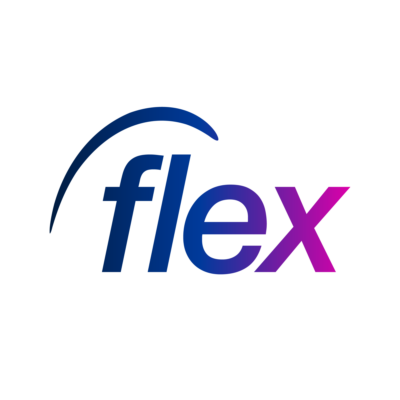
The use of AI in workforce management is set to grow significantly, in 2025 and beyond, with businesses increasingly turning to automation to address challenges such as talent shortages, compliance demands, and last-minute fulfilment issues. Managing a contingent workforce has become more complex, requiring carefully considered solutions that help to streamline processes and reduce administrative burdens. By turning to AI and automation, companies can discover smarter, faster, and more efficient ways to manage their workforce.
How AI is reshaping contingent workforce management
AI-driven talent acquisition
One of the most significant changes AI brings to workforce management is in talent acquisition. Traditional recruitment processes often involve time-consuming manual efforts, from sifting through CVs to scheduling interviews. AI eliminates these issues by automating key steps. For instance, AI-powered tools can analyse job descriptions and candidate profiles to identify the best matches, significantly reducing time-to-hire.
Predictive workforce planning
AI and predictive analytics are steadily replacing the old ways in which businesses planned their workforce needs. By analysing historical data and market trends, AI can forecast labour demands, helping organisations adapt to seasonal fluctuations, unexpected surges, or downturns.
For example, predictive tools can help a retailer prepare for increased demand during the holiday season by ensuring they have the right number of temporary workers ready to step in. Insights like these are invaluable for smooth-running operations and maintaining customer satisfaction.
Compliance automation
Dealing with the complexities of ever-changing employment laws and regulations is a constant challenge for businesses, particularly those with a contingent workforce. AI simplifies compliance management by automating processes such as tracking worker certifications, monitoring working hours, and flagging potential violations.
The benefits of AI and automation in staffing solutions
Efficiency and speed
Automation is making a world of difference when it comes to successful workforce management. Tasks like onboarding, payroll, and scheduling, which traditionally require significant manual input, can now be completed in a fraction of the time. This frees up HR teams to focus on strategic initiatives rather than administrative tasks.
Cost optimisation
AI-driven staffing solutions also contribute to cost savings. By improving resource allocation and reducing reliance on traditional agencies, businesses can stretch their budgets much further. AI tools ensure that every pound spent on staffing delivers real value, whether by minimising overtime costs or improving workforce utilisation.
Improved workforce engagement
AI not only benefits employers but also increases worker satisfaction and levels of retention. By offering features like flexible scheduling and real-time communication, AI-powered platforms create a more personalised and engaging work environment.
Mobile-first platforms enable workers to take control of their schedules while providing employers with the tools to maintain oversight. This generates a far more positive relationship between businesses and their contingent workforce.
Tools and technologies driving AI-driven workforce management
AI-based vendor management systems (VMS)
Vendor management systems powered by AI are transforming how businesses manage supplier relationships. By centralising data, tracking performance metrics, and automating workflows, these systems minimise disruptions to operations and improve decision-making.
Automated payroll and compliance tracking
Payroll errors can be costly and time-consuming to fix. AI tools eliminate these issues by automating payroll processes, ensuring accuracy and compliance with little need for manual intervention.
Predictive analytics for workforce trends
Predictive analytics tools provide businesses with actionable insights into workforce trends, enabling them to make proactive decisions. For instance, these tools can help identify when a business might face a labour shortage, allowing them to address the issue before it impacts operations.
Strategies for successfully integrating AI into workforce management
Phased implementation
Adopting AI doesn’t have to be overwhelming. A phased approach allows businesses to gradually integrate AI tools into their operations. Start with areas like recruitment and onboarding, then expand to compliance and performance management as the organisation becomes more comfortable with the technology.
Training and change management
Introducing AI tools requires a focus on training and change management. Upskilling HR teams to work alongside AI allows them to see the technology’s full potential. Clear communication about the benefits of AI also helps to address any resistance within the organisation.
Ethical and transparent AI use
As businesses increasingly turn to AI, it’s important that the maintain ethical practices. This includes ensuring human oversight in decision-making and being transparent about how AI tools are used.
For a deeper dive into ethical AI practices, read Forbes’ discussion on balancing AI and human-centric staffing approaches.
Subscribe to our newsletter
Stay ahead of employment updates and workforce management tips. Subscribe to our newsletter for expert insights straight to your inbox.
Overcoming challenges in AI adoption
Data security and privacy
Data security is a top concern when adopting AI tools. Businesses need to make sure that their data is protected and compliant with regulations. Choosing trusted vendors is essential for mitigating these risks.
Resistance to change
Resistance to adopting AI often stems from a lack of understanding or fear of the unknown. Businesses can overcome this by implementing phased rollouts, providing training, and clearly communicating the benefits of AI.
Integration with existing systems
Seamless integration with current HR systems is vital for the success of AI adoption. Finding the right tailored solution allows businesses to incorporate AI into their workflows without disruption, enabling a smooth transition.
Transform your workforce management today
Indeed Flex gives businesses the tools to overcome staffing challenges with its groundbreaking AI-driven platform, offering fast access to a high-quality, pre-verified workforce. Discover how our tailored solutions can propel your business forward—request a demo today.
Book a demo
Discover a staffing solution tailored to suit your business requirements








